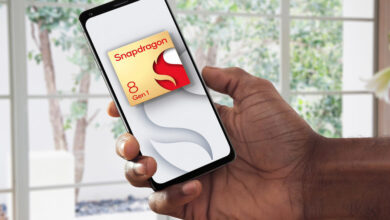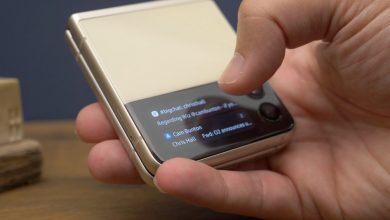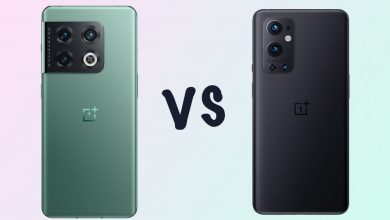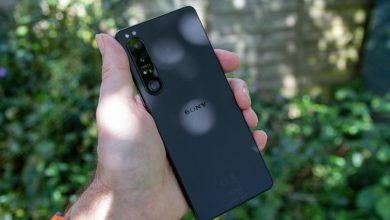What is 5G, how fast is it and how can I get it?
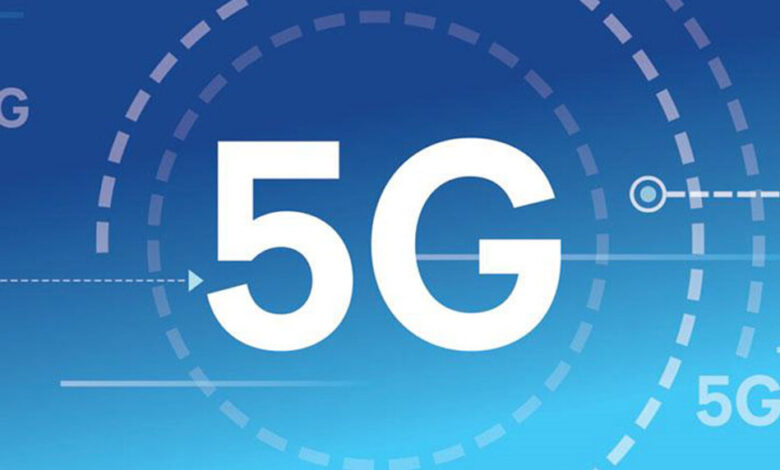
(Pocket-lint) – All the major networks have announced 5G services in the US and UK while there are growing numbers of 5G phones from vendors such as Apple, Huawei, Motorola, Nokia, Oppo, Samsung, Sony, Xiaomi and more. But what does 5G mean for you?
As well as further expansion of 5G networks during the remainder of 2021, we’ll also be seeing a lot more 5G phones launching, especially in the mid-range and even cheaper end of the market.
What is 5G?
5G is the next evolution in mobile phone networks. In the last two decades we’ve had the launch of 3G, then 4G, and now 5G.
5G is built on top of 4G, effectively, so the technology behind 4G (LTE) is going nowhere. 3G will eventually be switched off and the spectrum repurposed. 2G is here to stay in the background, however.
By 2024 there will be over 1.5 billion of us connected to 5G, according to Ericsson, a company that makes some of the infrastructure that will make all this possible.
Analyst Paolo Pescatore suggests that networks need to explain clearly to users the benefits of 5G as well as what bundled extras or benefits they can get with 5G deals. The initial price premiums area already falling away.
Dominic Sunnebo, director of consumer insight at Kantar says that many consumers are already highly aware of 5G. It polled 10,000 people in June 2019 which suggested that only 9 percent of the UK population are unaware of it.
And, because of the recent UK Huawei debacle as well as erroneous theories linking 5G to other things, there’s certainly sky-high awareness in 2020.
The different types of 5G
There are different versions of 5G – we shouldn’t really have to talk about these in terms of the actual experience of using our phones, but the fact is that they’re used by phone networks/carriers for different purposes and do affect coverage. And also carriers are using names for these different types, too.
So here we’re going from fastest to slowest and also from radio waves with the shortest frequency wavelength to the largest.
5G+ or mmWave
The name millimetre wave (mmWave) refers to its wavelength – it’s the shortest wave version of 5G and brings the greatest speeds. The problem is that the waves can’t go that far; they have difficulty navigating bodies let alone walls. It’s being used in the US but it’s not in the UK yet (but it will be).
It’s for central city areas where high capacity/dense coverage is required.
As for the US networks, Verizon calls it Ultra Wideband, AT&T calls it 5G+ and T-Mobile just refers to it as mmWave at present.
Mid-band (3.6-6GHz)
Mid-band accounts for all the 5G services in the UK at present. In the US, Sprint rolled out its True Mobile 5G network in these bands – this has now been incorporated into T-Mobile’s 5G network now the two have merged.
Mid-band 5G can provide 5G coverage over a much larger area than mmWave.
Low-band (under 1GHz)
Low-band is being used to bring nationwide coverage to the US (and will be in the UK shortly), with T-Mobile talking about extending its 5G network (called Nationwide 5G) to 200 million users with it. AT&T refers to its low-band service as simply ‘5G’. Verizon calls it 5G low-band.
Below 6GHz can be referred to as Sub-6, so you get some companies referring to two types of 5G signals essentially – mmWave and Sub-6.
What is 5G E?
Trying to get ahead of the competition, AT&T in the US also marketed a service called 5G E. Standing for 5G Evolution, the service is nothing more than a slightly faster version of 4G with some branding sparkle – indeed it’s the same as LTE Advanced.
What are the benefits of 5G?
With a new network comes new capabilities, from broadband-like speeds on your phone to reduced latency – which basically means no delay when you stream a video or play online games.
For some, it will mean they could theoretically ditch their home broadband altogether. Think of movie streaming as seamlessly as music streaming currently is.
Another huge benefit is how quickly you can upload data. 4G has always been about getting data – streaming movies or music for example – but with 5G the network can handle all this data much more efficiently.
Things will also get better on the train and in large populated areas as the 5G network is better at coping with movement and when lots of people are connecting to the network simultaneously at a football game for example.
Beyond general consumer needs, 5G networks will also enable the communication between autonomous cars remotely, a connected traffic infrastructure, and remote factories working without local intervention.

5G in the US
Verizon, AT&T and T-Mobile are all offering 5G services of differing coverage and quality.
T-Mobile 5G
T-Mobile has also struggled with its 5G rollout due to its protracted merger with Sprint which is now complete. It launched a mmWave service for speed and a low band service for coverage, while the carrier had to rely on Sprint’s mid-band spectrum to power things up.
After the merger, T-Mobile US announced a huge boost to its 5G network by around 30 percent. It has now launched a ‘standalone’ (SA) 5G network and nearly 250 million people in more than 8,300 cities and towns across the US now have 5G coverage.
T-Mobile’s mmWave network is live in selected large US cities. T-Mobile says it is upgrading 1,000 cell towers a month for mmWave, covering 100 million Americans
AT&T 5G
As we mentioned above, AT&T has confusing branding around 5G – 5G+ (or 5G Plus) is mmWave, 5G is low-band and 5GE is basically LTE Advanced (yes, 4G). AT&T’s senior vice president Chris Penrose described AT&T 5G as a chocolate chip cookie. The main cookie dough represents low-band 5G while the chocolate chips represent the 5G+ millimeter-wave cities “sprinkled in across the country.”
Areas of more than 20 US states have access to AT&T’s full 5G network. But it seems AT&T would rather roll out Nationwide 5G rather than 5G+ for now. It’s planning on working with Nokia to improve coverage using 40Mhz spectrum.
Verizon 5G
Over 70 US locations have Verizon 5G Ultra Wideband. Current subscribers will need to pay $10 extra a month to use the so-called 5G Ultra Wideband Network, although the fee is currently being waved for new subscribers.
Verizon says users can expect typical download speeds of 450Mbps, with peak speeds of nearly 1Gbps, and latency less than 30 seconds.
Verizon is now rolling out low-band spectrum as well and expects to reach around 100 million people over the next year with 175 million people targeted by 2024.
Verizon is already offering a 5G home broadband service. Verizon 5G Home users have speeds up to 1Gbps – “cut everything you hate about cable” says the corporation in its marketing. Additionally, the network has now also launched the Inseego MiFi – the first 5G hotspot to become available.

5G in the UK
In the UK, Vodafone, EE, O2 and Three have confirmed they are launching commercially available 5G services in 2019.
BT 5G
BT’s 5G network has now launched. BT and EE are the same company now, so BT is really a virtual network operator using the EE network. And it’s available everywhere EE 5G is – a total of 112 locations at present.
Like Vodafone, BT is also offering a converged broadband and 5G mobile plan called BT Halo.

EE 5G
EE now has over 160 UK 5G locations live for 5G. That’s not quite as many as Three but EE maintains its coverage is more comprehensive in each location. The network now has over a million active 5G users.
Customers in busy areas will get speed boosts of up to 100-150Mbps over 4G, with some experiencing up to 1Gbps – 5G performance will improve over time.
EE is offering some swappable benefits such as making services like Netflix and BT Sport exempt from your data limit or a roaming pass. More details here.
In terms of 5G broadband, EE is offering HTC’s 5G Mobile Smart Hub (it previously said it would offer Huawei’s 5G CPE Pro router but this appears to have been shelved).
O2 5G
O2 emerged from the Ofcom spectrum auctions with a good lump of 5G spectrum and its 5G network is live in 150 places. In addition to rolling out 5G to central areas, the network has also bring 5G to transport hubs as well as entertainment venues like The O2 in Greenwich and Twickenham Stadium (O2 sponsors England Rugby).
As we mentioned above, O2 and Vodafone have a joint network sharing venture which means that about three-quarters of their UK mast sites are used by both networks. As for the other quarter, around 2,700 sites in 23 of the UK’s biggest areas will have gear present from both networks.
Sky Mobile 5G
Sky is now offering 5G services – it’s a virtual operator that uses O2’s network and so its 5G coverage is available in the same locations.
Sky Mobile customers who are with Sky VIP can get 5G free, with nothing to pay on top of Sky Mobile’s existing tariffs. These start from £6 a month for a 3GB data plan. It you want more data for 5G browsing and streaming the 9GB plan is £12 a month.
Sky Mobile’s existing Swap and Watch features are also available with 5G. Swap enables you to upgrade to a new handset whenever you like. Watch enables unlimited streaming of TV and movies through Sky apps without using your data allowance.
Three 5G
Three’s 5G network is available in 193 locations, though the footprint of some of those areas is quite small. However, things are improving all the time.
Three says it is investing over £2 billion into its 5G rollout and has bought the most 5G spectrum in the UK (100MHz). It claims this will deliver the fastest UK network as a result and we have achieved peak speeds in one of its premium locations (Cardiff) around 700Mbps, which is seriously impressive.
Current Three 4G customers can access 5G at no extra cost (although you’ll need a new handset, of course) and it’s offering unlimited tariffs as usual.
Vodafone 5G
Vodafone’s 5G network is now live in locations around 100 UK towns and cities.
In order to get 5G deployed as quickly as possible, Vodafone once again teamed up with O2 to build a joint 5G network. This will mostly be outside of the larger cities where the networks say they will still work autonomously – in simple terms, this means they’ll still have sole responsibility for around a quarter of their mast sites.
The pair already do some network-sharing and also run a joint venture that manages network sites (but not the equipment itself).
Writing by Dan Grabham. Originally published on .



